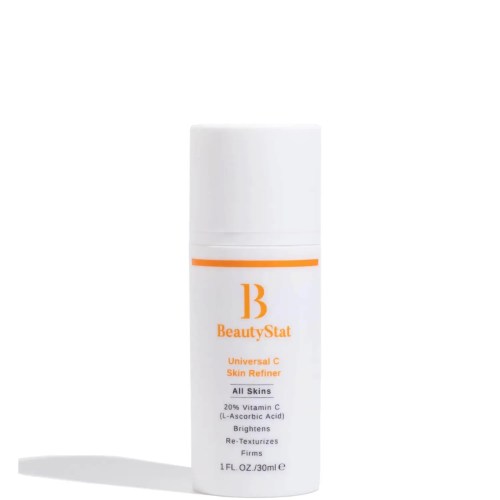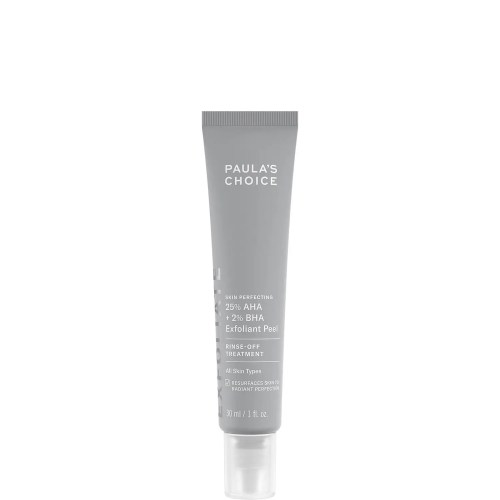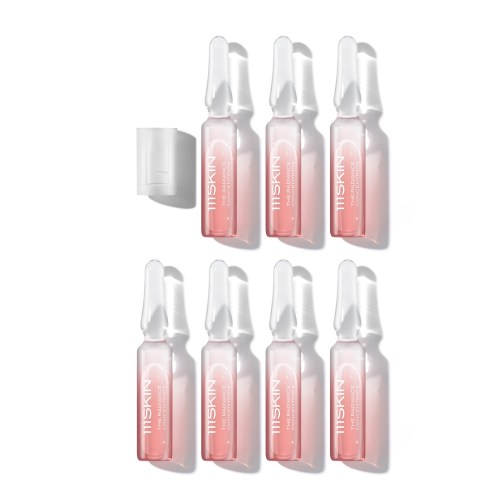Our editors independently select these products. Making a purchase through our links may earn Well+Good a commission
In the wonderful world of exfoliating acids, a few key players tend to get all the fame and glory—like salicylic, glycolic, and lactic. But there are some supporting characters that deserve their time in the spotlight, too, and tartaric acid is among them.
The gentle exfoliant is ultra-skin-friendly and pairs well with the other acids you also know and love. So why isn’t it part of your routine yet? Keep reading to find out why it should be.
What is tartaric acid?
Tartaric acid is a type of alpha-hydroxy acid (AHA) that’s found in grapes, wine, and other fruits like citrus and bananas. “AHAs are chemical exfoliants that gently break down bonds between skin cells to remove dead skin cells from the superficial layer of the skin that contribute to dullness,” says Michele Green, MD, a board-certified dermatologist based in New York City.
What makes tartaric acid so special is its ability to not only play nicely with other AHAs, but actually make them work better so that you’re getting more bang for your exfoliating buck.
While certain skin-care acids should be used on their own (instead of together) to avoid redness, flaking, and irritation, tartaric acid plays a sort of peace-keeping role to help your skin bypass these adverse effects. “It has been shown to be a pH stabilizer, which helps maintain a pH range [in your skin] that other AHAs need to work efficiently,” says Dr. Green. For this reason, you’ll often see tartaric alongside other acids in skin-care products—but rest assured that the pairings are more likely to help, rather than harm, your complexion.
The benefits of tartaric acid
1. It yields balanced, brighter skin
Because tartaric acid is an AHA, its biggest benefit is its ability to melt away dead skin cells. “By removing the top layer of dead skin cells through chemical exfoliation, tartaric acid helps to reveal new, healthy skin that is more even in skin tone and texture,” says Dr. Green. In exposing this fresh layer of skin, you’ll be left with a visibly brighter, more luminous complexion.
2. It offers antioxidant protection
In addition to offering gentle exfoliation, tartaric acid is rich in antioxidants, which are key for protecting skin from cellular damage caused by environmental stressors (think: UV damage and pollution). “It defends the skin from free radical damage and oxidative stress that contribute to signs of aging—like fine lines and wrinkles, skin laxity, and pigmentation,” says Dr. Green.
3. It’s moisturizing
It’s rare to find an ingredient that’s exfoliating and hydrating at the same time, but tartaric acid checks both boxes. “It’s been shown to have moisturizing properties to boost hydration and plump the skin,” says Dr. Green. “Tartaric acid is broken down into tartramides, which mimic ceramides found in the skin that keep the skin hydrated and help maintain its natural protective barrier.” In other words, this mechanism makes the skin-care ingredient suitable even for those with dry and sensitive skin.
4. It enhances the absorption of other products
Since tartaric acid gets rid of buildup on the surface of your skin, it helps optimize the performance of the rest of your routine. “Removing dead skin cells, dirt, and impurities allows any skin-care products like serums and moisturizers applied afterward to be absorbed more deeply and easily to deliver maximum benefits,” says Dr. Green.
How to use tartaric acid
Though tartaric acid should be gentle enough to use on all skin types (yes, even dry and sensitive), there are a few general rules that Dr. Green recommends following to avoid irritation.
“When introducing any new skin-care products, start by using them less frequently—like once every three days—and gradually increase frequency as tolerated,” says Dr. Green. And even after you’ve built up a tolerance, you’ll want to limit tartaric acid use to once a day, max (FWIW, this goes for AHAs in general).
Moreover, you’ll want to be mindful of the other actives in your routine, and only use one intense ingredient at a time. “Those with extremely sensitive skin or allergies may experience irritation if they overuse tartaric acid or combine it with harsh products like retinol,” adds Dr. Green.
Lastly, as is the case with all exfoliants, your skin may be more sensitive to the sun when you tartaric acid. As such, Dr. Green suggests using it only at night and being extra diligent about applying sunscreen (SPF 50) each morning. And, of course, it never hurts to consult your dermatologist to see if tartaric acid—or any actives, for that matter—would be beneficial for your unique skin condition and goals.
Tartaric acid skin-care products to try

BeautyStat Universal C Skin Refiner — $85.00
While tartaric acid has the power to brighten your complexion, vitamin C remains the cream of the crop in the glow-getting department—so why wouldn’t you want to use them both together? This formula combines the two ingredients to fade dark spots, boost collagen production, and even out skin texture. “We use tartaric acid in the BeautyStat Universal C Skin Refiner because it provides the optimum pH level for the skin to fully absorb the L-Ascorbic Acid (pure vitamin C) that is in our formula,” says Ron Robinson, a cosmetic chemist and the brand’s founder.

Paula’s Choice Skin Perfecting 25% AHA + 2% BHA Exfoliant Peel — $42.00
Dr. Green recommends this professional-strength peel to tackle countless complexion woes in one fell swoop. “It contains tartaric acid along with salicylic acid, glycolic acid, lactic acid, mandelic acid, and malic acid. The high concentration of AHAs addresses signs of aging and increases skin cell turnover for a bright and healthy complexion, while the BHA deeply cleanses and decongests enlarged pores,” she explains. However, she warns that you should cap usage at one time per week, as well as to take extra precautions to avoid sun exposure and apply sunscreen day in and day out.

111SKIN The Radiance Concentrate — $175.00
Ampoules are power players for when you want fast, targeted results at home. If you’re hoping to visibly ditch dullness in one week flat, look no further than these radiance-boosting ampoules from doctor-developed brand 111SKIN. Optimum doses of citric, tartaric, and lactic acids dissolve dead skin cells and flakes, as yeast proteins—which are rich in essential amino acids—assist in illuminating the skin deeply below the skin’s surface.
Sign up for the Well+Good SHOP Newsletter
Get exclusive deals on wellness, beauty, fitness, and food products that have been hand-picked by our editors.
Got it, you've been added to our email list.











